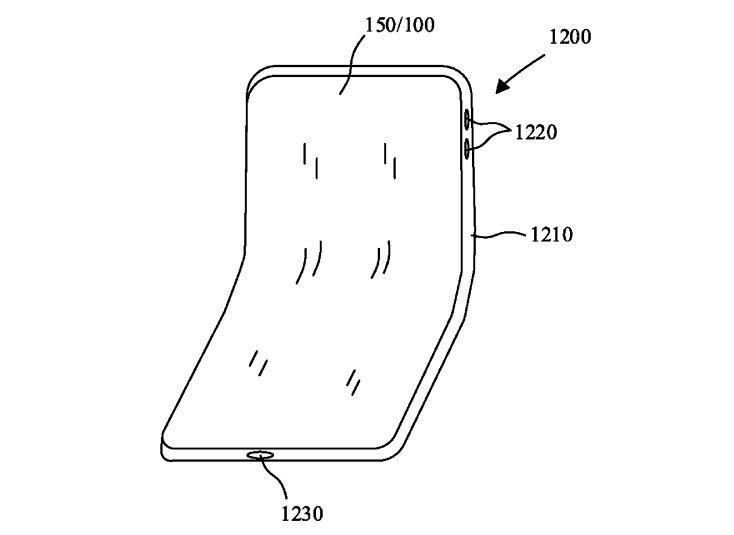Foldable iPhone Update: Apple Develops Protective Layer For Foldable Displays

KEY POINTS
- A new patent shows Apple is working on a foldable display
- The patent specifically talks about a protective layer for a flexible display
- The flexible display can be used in a variety of devices including iPhones and iPads
While the world has seen foldable smartphones from big-name tech companies such as Samsung, Motorola and Huawei, consumers are yet to see a foldable iPhone or iPad from Cupertino tech giant Apple. A new patent, however, reveals that it might not be long before the company releases its own devices to compete with the likes of the Galaxy Fold, Galaxy Z Flip and Moto Razr.
A patent application, titled “Hybrid Coverlay/Window Structure For Flexible Display Applications,” published recently by the U.S. Patent and Trademark Office, shows that Apple is developing a protective layer that will be used on foldable displays.
As per the patent, the protective layer will be placed atop the flexible display in order to add protection to it. The protective cover layer can be made of transparent plastic or glass so that it can serve as a transparent window to allow users to see what's being displayed on the screen.
The patent indicates that regardless of the material being used, the protective cover layer should be transparent enough to allow for viewing the display, possess enough rigidity so as to avoid wrinkling and creases, and offer scratch resistance to protect the display from damages caused by frequent taps, swipes and other things.

Some embodiments describe the protective cover layer as having a transparent support substrate, with a hardcoat layer covering its exterior side. This hardcoat layer may “optionally define an exterior surface” of the device.
The transparent support substrate, as the patent states, “may be a brittle substrate such as glass or sapphire,” and “may be curved, flexible and/or conformable.” This hardcoat layer, on the other hand, can be characterized as having “lower elastic modulus and higher elongation-to-break.” The hardcoat layer will be able to prevent the flexible display from cracking or breaking when bent.
The patent states that this technology could be applied to a variety of devices with displays, including wearables (like the Apple Watch), mobile communication devices (such as iPhones), handheld computers (like iPads), portable computers (like MacBooks), desktop computers (like Macs), all-in-one computers (like iMacs), multimedia devices (like TVs) and so on.
With that said, considering that this is still a patent application, a market release date remains unseen at the moment. Fans are advised to stay tuned for more updates as they come.
© Copyright IBTimes 2025. All rights reserved.



















